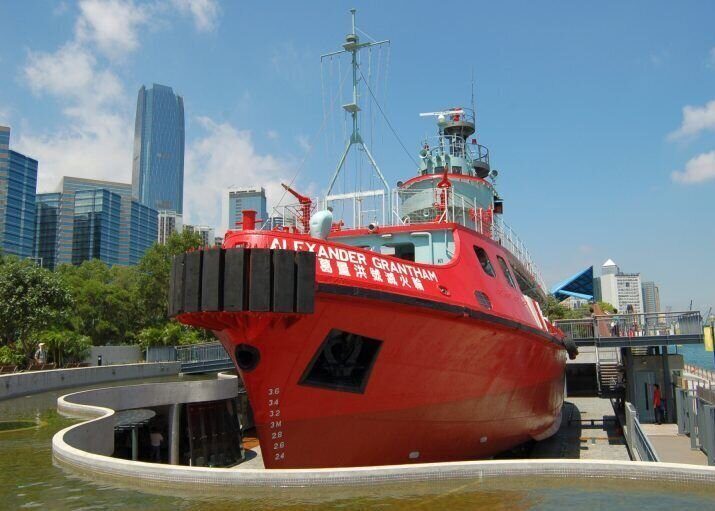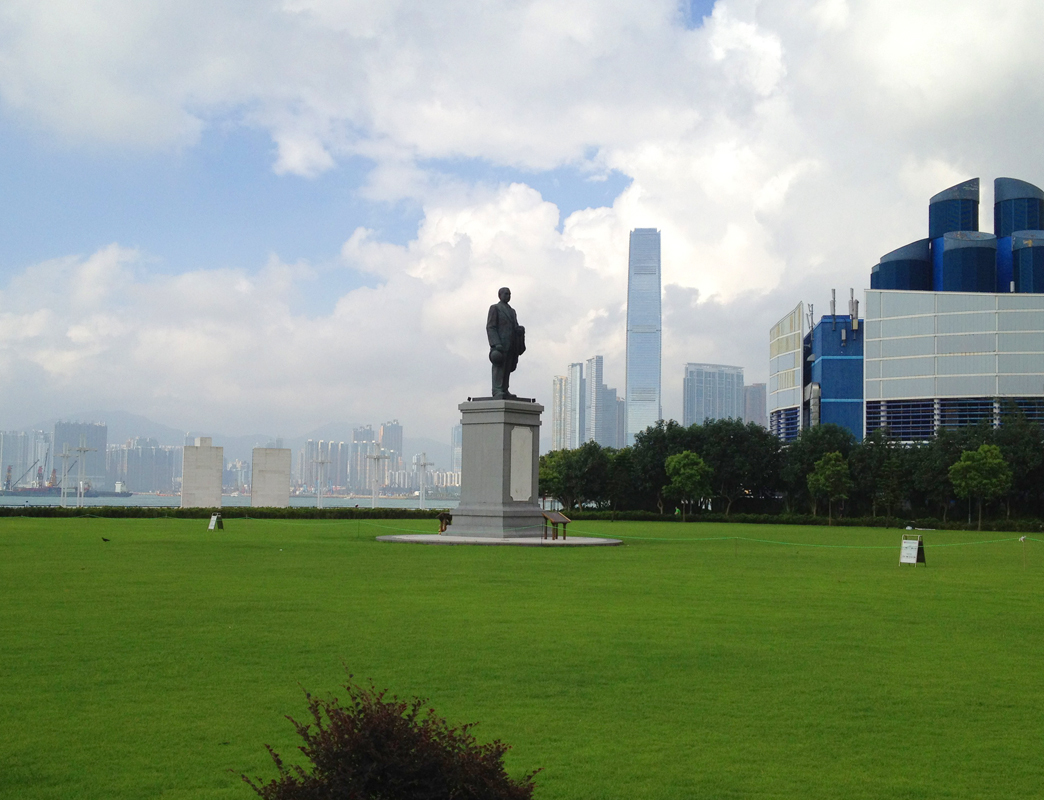The Hidden Spots Along Hong Kong Island’s Coast

Hong Kong has seen an extensive transformation in modern times: from being a sleepy shipping port to Asia’s world city. Witnessing a land transformation that would make the Dutch jealous, Kowloon and the New Territories have seen new mini cities rise under reclaimed land, ports built using sand, and mountains made out of trash.
However, Hong Kong Island itself has remained largely untouched.
The coast of the Island, jagged in parts littered with waterfalls and crags, and brimming with ancient Hong Kong culture, is a secret even the city's urban adventurers are unaware of. Nearly 60 kilometres of road and pathways loop across the island with every corner and turn offering another special weekend spot for the family or an adventure.
We compiled together some of the best spots alongside Hong Kong Island’s coast to save for your next tour:
Sai Wan Swimming Shed
The worst-kept secret of Hong Kong for weekday sunset Instagram stories or the perfect spot for a cold swim, the Sai Wan Swimming Shed has garnered notoriety amongst all types of Hong Kongers. It remains the only one of its kind, allowing early morning swimmers to brave the cold blue waves of west Hong Kong.
Swimming sheds were built along Hong Kong Island’s sea shore, offering a space for swimming and relaxation in the open waters. Today, Sai Wan is the last remaining swimming shed in Hong Kong, dating back to the 1950s.

Location: Sai Wan Swimming Shed, Victoria Rd, Mount Davis
Former Victoria Detention Centre on University of Chicago Campus
Opened in December 2018 to the public and students, University of Chicago’s Hong Kong campus and research facility incorporates both natural elements and historical legacy of Mount Davis on the west shore of Hong Kong Island.
Beneath the blue glass structure of the MBA school lays remnants of the former Mount Davis Concentration Camp, employed by Special Branch of the Royal Hong Kong Police Force prior to the 1997 handover.
A supposed secret intelligence agency, the organization’s only dedicated building was located on Victoria Road to detain spies and political prisoners during the 1967 riots of Hong Kong. The building has been infamously nicknamed the “White House,” due to its white exterior that illuminates beyond the green hill.
The site is open to the public free of charge by online appointment. Guided tours occur weekly.

Location: Hong Kong Jockey Club University of Chicago Academic Complex, 168 Victoria Rd, Mount Davis
Wah Fu Celestial Hole
Wah Fu’s thousand buddha shrine is something of a marvel for local tourists paying a visit to the secret sanctuary. Located on a slope next to Wah Fu Estate, almost 8,000 idols and deities stand facing towards Lantau Island and the South China Sea.
It is against Buddhist law to throw away a statue of Buddha when damaged or broken; if damaged, one can leave their statue on the side of the road, whereby a passerby may worship it or take it home to keep.
According to local legend, a tradition begun where an old resident of Wah Fu started gathering the broken statues around his local area, eventually collecting statues directly from people. He settled on the waterfront of Wah Fu as a shrine for his collection as the site already had a statue of Tin Hau, the patron goddess of fishermen – a protection for passing fishermen along the west Hong Kong coast.

Location: Wah Hu Celestial Hole, 8 Waterfall Rd, Wah Fu Estate
Mills & Chung Path
Mills & Chung Path offers sweeping views from the south coast of Hong Kong Island. The gentle 20-minute stroll takes you along the greenery and rubble below the noise-polluted Island Road. From here, you can catch the yachts, old fishermen, and swimmers of the Deep Water Bay enjoying leisure time.
The pathway was initially constructed as an above- ground electricity system for Hong Kong Electric to divert power from Wong Chuk Hang to Chung Hum Kok. During proposed construction hearings, plans were put in place to accommodate a seafront walkway from Island Road to neighbouring Deep Water Bay beach.
The path begins just outside the perimeter of the Hong Kong Country Club and ends at the front door of Victoria Recreation Club, a three-minute walk away from the west side of Deep Water Bay.

Location: Mills & Chung Path, Deep Water Bay
Hairpin Beach
Hairpin Beach is a tiny rocky inlet located adjacent to Stanley Main Beach. Due to the strong current north of the beach, swimming is prohibited, and no shark net has been installed nor lifeguards that patrol the beach. Once a sandy haven, the sand and tourists departed to more popular Stanley Main Beach following its closure by the government in 2005.
Nevertheless, Hairpin Beach’s lush trees, rugged surrounding rock formations and pebbly coast, and blue waters looking onwards to the southern islands paint for a beautiful sunset walk, picnic, or after-work hangout.

Location: Hairpin Beach, Stanley Beach Rd, Stanley, Hong Kong
Former Cape Collinson Battery
The Cape Collinson Battery was constructed by British forces in 1938 to defend Hong Kong Island’s eastern coast from neighboring foreign forces. Damaged by Japanese forces in December 1941 and Super Typhoon Mangkhut in September 2018, Cape Collinson Battery is a true lasting monument to the defence of Hong Kong Island and its strategic location in protecting the city.
The hike to the battery lasts one- and three-quarter hours, accessible from the MTR at Shau Kei Wan beside Shek O Country Park.
Although the hike is worth the sweat and tears. The surrounding view from the battery takes in the vast expanse of blue of the south of the city, the cascading rock formations dropping down to the crashing waves, and the serenity of the Tathong channel cutting through the south-west of Hong Kong Island.

Location: Former Cape Collinson Battery, Cape Collinson Rd, Shek O, Hong Kong
Museum of Coastal Defence
An old fort built by the British in 1887 to fend off Russian or French attacks coming from the east along Victoria Habour, the Lei Yue Mun Fort now houses Hong Kong’s Museum of Coastal Defence.
The fort held soldiers defending Hong Kong Island’s northeast corner during the 19th century and early 20th century, fell to the hands of the Japanese occupation in December 1941, and operated as a training ground for the British Army until 1987, finally vacated and returned to the Hong Kong government.
The museum opened in 2000 after conversion from the military compound. A permanent exhibition “600 years of Coastal Defence” details the story of Hong Kong’s coastline from Ming Dynasty, throughout the First and Second Opium Wars, Japanese Occupation, through to today’s civic use.

Location: Museum of Coastal Defence, 175 Tung Hei Rd, Shau Kei Wan
Fireboat Alexander Grantham Exhibition Gallery
Quarry Bay’s north shore holds the bright firetruck-red Alexander Grantham alongside its promenade, an infamous fireboat that assisted with countless rescue operations along Hong Kong’s waters and coast. The boat went into service in 1953, commissioned by Hong Kong & Whampoa Dock Co. Ltd.
The now purpose-built Fireboat Alexander Grantham Exhibition Gallery stands as a testament and living museum to tell the story of Hong Kong’s fire rescue and prevention operations in Victoria Harbour. A little remnant of hidden history tucked away from most Hong Kongers’ eyes.

Location: Fireboat Alexander Grantham Exhibition Gallery, Quarry Bay Park Phase 1, Quarry Bay
Jardine Noonday Gun
The Jardine Noonday Gun stands a living relic of British Hong Kong post-1997 handover in Causeway Bay’s Typhoon Shelter. The gun was used as a salute to returning sailors and tradesmen to the island and a coastal defence warding off foreign forces. Today, the gun is used as a time-telling piece, with the gun fired daily at 12 PM every day and 12 AM on New Year’s Eve.
The gun is owned and operated by British conglomerate Jardine Matheson and can be accessed from a tunnel beneath Gloucester Road from the car park of the former Excelsior hotel.

Location: Jardine Noonday Gun, Gloucester Rd, Causeway Bay, Kellet Island
Sun Yat Sen Memorial Park
The memorial park of Sun Yat Sen was created on reclaimed land to commemorate the Hong Kong-born first president of the Republic of China and his achievements as China’s first president, assisting the fall of dynastic rule in the mainland, and as Hong Kong’s first trained medical doctor.
A quiet resting ground located on the harbor of Sheung Wan and far away from the deafening noises of Central, the Sun Yat Sen Memorial Park offers a space for solitude, a picnic, or a simple reflection of Hong Kong’s rich history intertwined with China and Taiwan’s creation. The lawn grass is bright green, and the park offers superb views of neighbouring Tsim Sha Tsui.

Location: Sun Yan Sen Memorial Park, 16 Eastern St N, Sai Ying Pun
Subscribe to The Beat's newsletter to receive compelling, curated content straight to your inbox! You can also create an account with us for free to start bookmarking articles for later reading.
Most Popular in Hong Kong
Cheap Shopping Spots in Hong Kong for Bargains and Cool Finds on a Budget

How to Use Cash, Octopus, Mastercard/Visa Cards Travelling to Hong Kong

Interview with @mtrsleepers, the People Capturing Hong Kong's Sleepy Commuters on Instagram

The History Behind Monster Building, Hong Kong's Coolest Instagram Hotspot

Budget-Friendly Food Tour: The Best Street Food in Mong Kok Under HK$100

